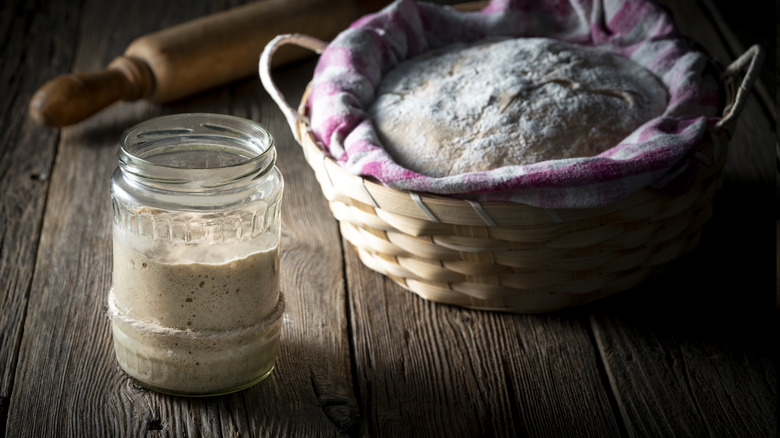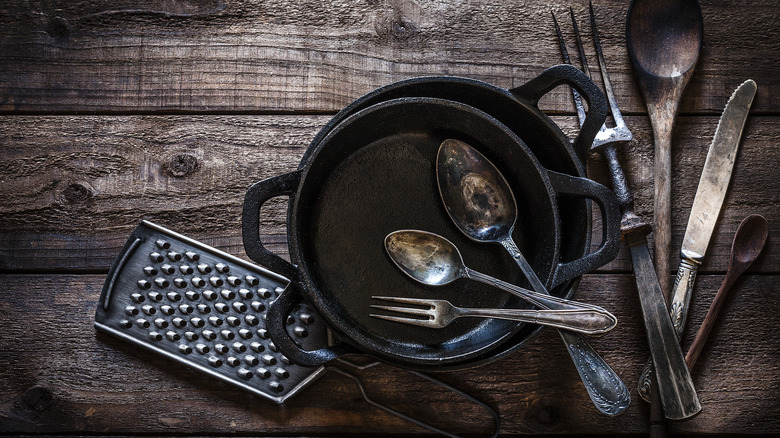Don't Make This Mistake When Storing Sourdough Bread Starter
Ah, sourdough bread. A beloved pandemic pastime, and the bane of many a home cook's existence, thanks to what feels 10,000 possible mistakes one can make. As rewarding as producing a tangy, crusty loaf of sourdough bread can be, it's a sensitive and intricate process where a lot can go wrong. Bread baking in general is filled with hard-to-measure pitfalls like over-proofing or not shaping your loaf properly, and sourdough adds the complexity of keeping a live culture going week after week. Of course, for anything that is going to be living in your kitchen, continuously storing it properly is important. This is one aspect that can be pretty forgiving with plenty of options that work, although a see-through plastic container that lets you measure the rise of the starter is ideal. There is, however, one type of container to avoid completely, and that is anything with reactive metals.
In cooking, reactive metals most commonly come in the forms of cast iron, aluminum, and copper, while most other options like stainless steel, glass, plastic, and ceramics are non-reactive. Reactive pans and containers, as the name would imply, can have chemical reactions to certain foods, especially acidic ones like sourdough, and add unwanted flavors. It's the same reason that you shouldn't cook acidic tomato sauce in cast iron, which can cause the sauce to taste metallic. Consider that sourdough starter is going to sit in a container for, hopefully, months and years on end instead of a few hours, and you'll quickly realize reactive containers are a no-go.
Avoid storing sourdough starters in reactive metallic containers
Reactive metals can interact with ingredients that are both acidic and alkaline, but for kitchen work, acidic things like lemon juice and vinegar are going to be the most common. The problem is that reactive metals are susceptible to having their atoms released from their bonds, and acids will pull these atoms from the pan or container. So reactive containers are not just changing the composition and taste of your sourdough; you will actually be ingesting the metals that your acidic foods have been exposed to. This isn't a problem in small doses, as our bodies can process metals like iron, but it's not something you want to keep doing over and over for the long term, which is exactly how you'll be using your sourdough starter.
It should be noted that many pans or containers mix elements to get the best of both worlds, like cast iron coated in non-reactive enamel. If this is the case you are fine to use it for storage, as the sourdough won't be coming into direct contact with the reactive element. Just make sure there aren't any scratches or cracks that are exposing the reactive metal to the sourdough and you'll be good to go. After putting so much work into your starter, the last thing you want to do is lose it to the wrong container.

